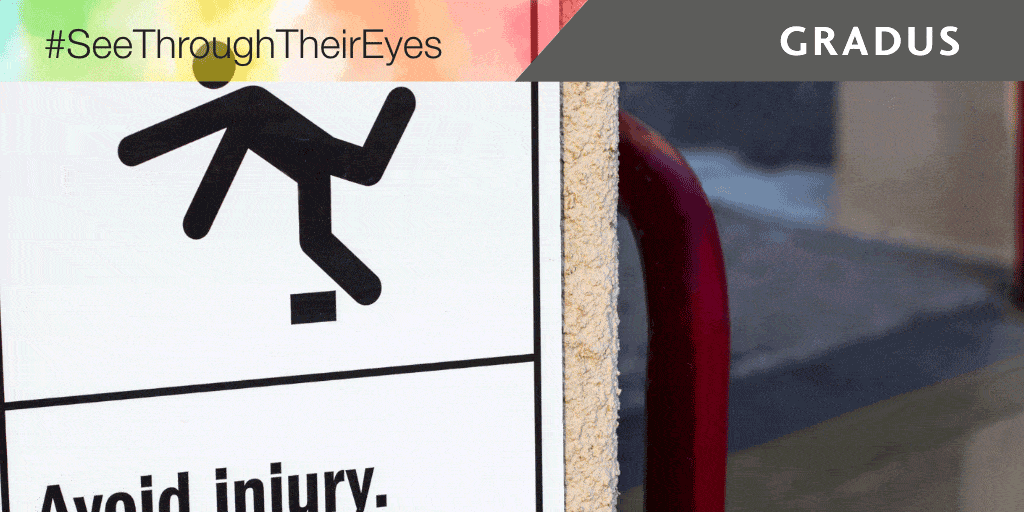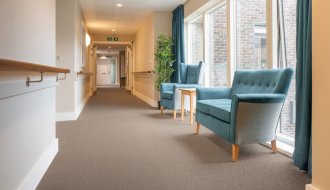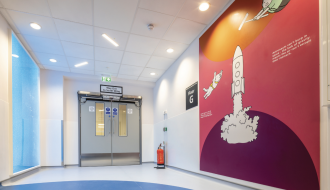How to create an inclusive environment for people with dementia
For people with dementia, the world is not seen as it once was. What might look normal in your eyes could potentially be disorienting, cause distress or even injury. In this article we will take a deeper look at what choices you can make to create a more inclusive environment for people with dementia.
In addition to dementia, people with this impairment often experience age-related sight issues. To really see through their eyes, we have recreated four common sight issues.
Take a look at the pictures below:

Cataracts - meaning opacification of the lens

Glaucoma - causing loss of peripheral vision

Hemianopia - causing the person to see one half-side only

Macular degeneration - causing loss of central vision
This is the reality experienced by a big part of the population. By understanding the everyday lives of people with dementia, we can create better environments for the many people living with it.
Understanding the needs
We teamed up with the Dementia Services Development Centre (DSDC) at the University of Stirling, an international organisation with more than 25 years’ experience in improving the lives of people with dementia through the development of research-led design principles.
Working with the DSDC’s team of clinical specialists has given us the following insights of needs for the end user for better dementia-inclusivity:
- Encourage familiarity
- Reduce stress and anxiety
- Create an intimate domestic scale
- Easily intelligible design, offering clear visibility and multiple cues while minimising distractions
- Easy to use and encouraging interaction and activity
The key factors
Some key factors to meet the needs mentioned are:
- Leveled accessibility from the outdoors
- Designing public spaces to include clear walking paths
- Easily navigated areas
- Short corridors without dead ends
- Good lighting
- Consistent tones on the floor
- Walls with a great contrast to the floor
- Contrasting doors
- Easily seen handrails for guiding and support
Designing for dementia
Designing for people living with dementia can be difficult. At Gradus and Gerflor, we pride ourselves on our ability to help create buildings in which people with dementia can live happy, comfortable and independent lives. This means understanding both the unique viewpoints of those with the condition and also of everyone in the supply chain, from architects and specifiers to contractors and installers.
With that in mind, we have created a comprehensive design tool that will help you create safer environments and independent living step by step.

The design tool include the following products:
- Carpet and vinyl
- Entrance matting- Trims
- Skirtings
- Wall protection & handrails
- Stair edgings
We help you create safe spaces
With over 40 years of experience, combining our products with knowledge of how to implement colours, textures and accessibility we are proud to continue our work to better the lives of many.
Do you want to know more about how we can help you create dementia-friendly environments or our design tool for creating safe spaces? Please contact us here.



